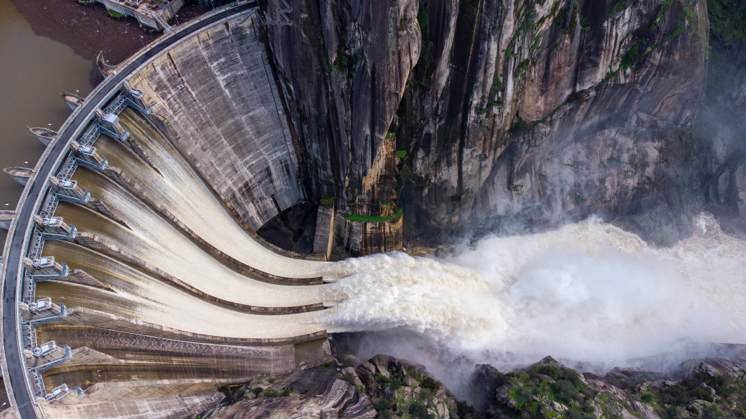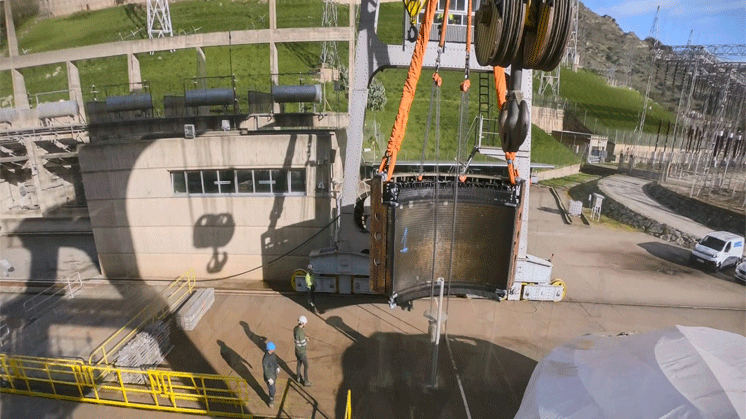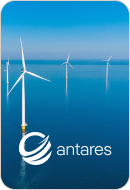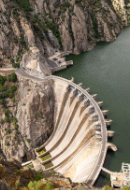What is hydroelectric energy
Do you know how hydroelectric power plants work?
Hydroelectric energy is generated by converting kinetic energy from water into electrical energy. To harness this power, enormous hydroelectric infrastructures are built to extract maximum power from this renewable emission-free, local resource. Learn all about it.
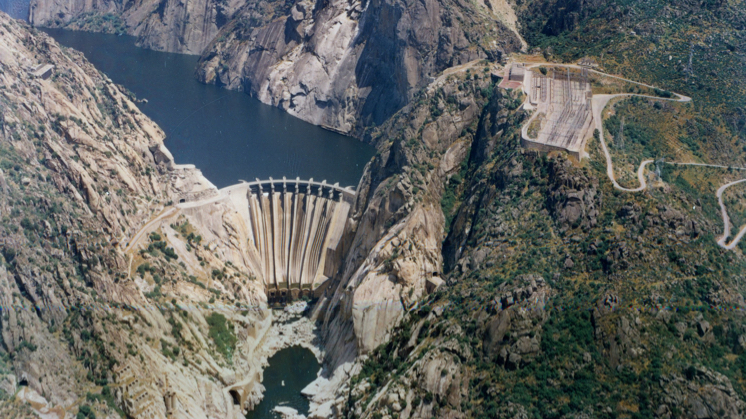
What are hydroelectric power plants?
Although reservoirs, dams and power plants are terms that tend to be grouped together and used interchangeably, they actually refer to different elements which are easy to identify:
- Dam: is the civil works infrastructure. Dams are structures that rise high above their foundations with long crowns. They contain an enormous amount of concrete.
- Reservoir: is a water storage facility. To understand their real state, two main variables are important: water level and volume stored.
- Power plant: is the construction containing the generators. Hydroelectric plants are defined by two basic magnitudes: their draft and their flow rate.
Main parts and functioning of a hydroelectric power plant

 SEE INFOGRAPHIC: How does a hydroelectric power plant work? [PDF] External link, opens in new window.
SEE INFOGRAPHIC: How does a hydroelectric power plant work? [PDF] External link, opens in new window.
How hydroelectric energy works
Hydroelectric power plants convert the potential difference of water into electricity by transferring it between two points at different heights or elevations.
To do this, a flow of water is forced through a hydraulic circuit that connects two points at different heights called a draft, in which water gains speed as potential energy is partly transformed into kinetic energy. The turbine transforms this kinetic energy into mechanical energy, which the generator then transforms into electricity.
Lastly, the flow of water leaves the turbine and is released back into the river, almost without speed, and with the potential energy that corresponds to the height of the outlet.
Overall output from the process is very high — between 90-95% — capturing almost all the potential energy of the water. Power loss is due to low pressure in the hydraulic circuit, to friction in the rotation of the hydroelectric power unit and losses in electrical equipment.
The opposite process is used in pumped storage hydroelectric power plants, which can make power plants reversible: These convert electrical energy into potential energy by pumping water into an upstream reservoir or tank.
Iberdrola hydroelectric plants in Arribes del Duero.
Replacement of the generator at the Saucelle hydroelectric plant (Salamanca, Spain).
Main types of hydroelectric power plants
By operation, hydroelectric power plants are classified as:
- Run-of-river plants:
These plants adapt to the flow rate of the river at all times, without changing it. These types of plant therefore have little storage capacity and work continuously and variably throughout the year. The energy they produce cannot be ramped to cover demand for electricity.
- Pondage power plants:
These facilities are able to store water and control the operation of the plant to meet fluctuating demand for energy. The water is stored in a reservoir upstream of the plant. Depending on its water storage capacity, the pondaging may be seasonal, annual and even hyper annual.
As well as generating electricity, these facilities can also store electricity by pumping water to an upstream storage reservoir.
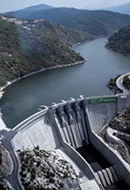
Hydropower terms
The 10 most relevant concepts in hydropower.
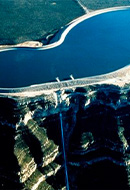
Pumped-storage hydropower plants
Do you know what pumped-storage hydropower stations are used for?
Advantages of hydroelectric energy
Hydroelectric plants have several advantages and positive aspects:
 Reuse:
Reuse:
This resource comes from rainwater and, better still, water used in the process can be reused.
 Duration:
Duration:
Hydroelectric facilities have a long useful life.
 Sustainable:
Sustainable:
Hydroelectric energy helps to reduce greenhouse gas emissions.
 Flexibility:
Flexibility:
Hydroelectric resources make it possible to cover peak demand times by making flexible use of the water in reservoirs.
 Control:
Control:
Reservoirs are particularly useful for controlling the flow of rivers to prevent dangerous flooding.
 Costs:
Costs:
Although building a hydroelectric power plant necessarily entails major investments in order to build the reservoirs, dams, conduits, etc., operating costs are low.
 Back-up:
Back-up:
These flexible plants are an essential supplement and back-up for other intermittent renewable generation technologies like photovoltaic solar and wind power.
Iberdrola has been investing in hydroelectric technology right from the start as part of its commitment to 100% renewable electricity generation with zero-contaminating emissions, reducing dependence on energy from outside sources and to be capable of meeting demand in real time, serving as an essential resource for improving security and guaranteeing the electricity supply.
The group plans to have 14 GW of hydropower capacity installed by 2025, including traditional hydroelectric and pumped-storage hydroelectric.





